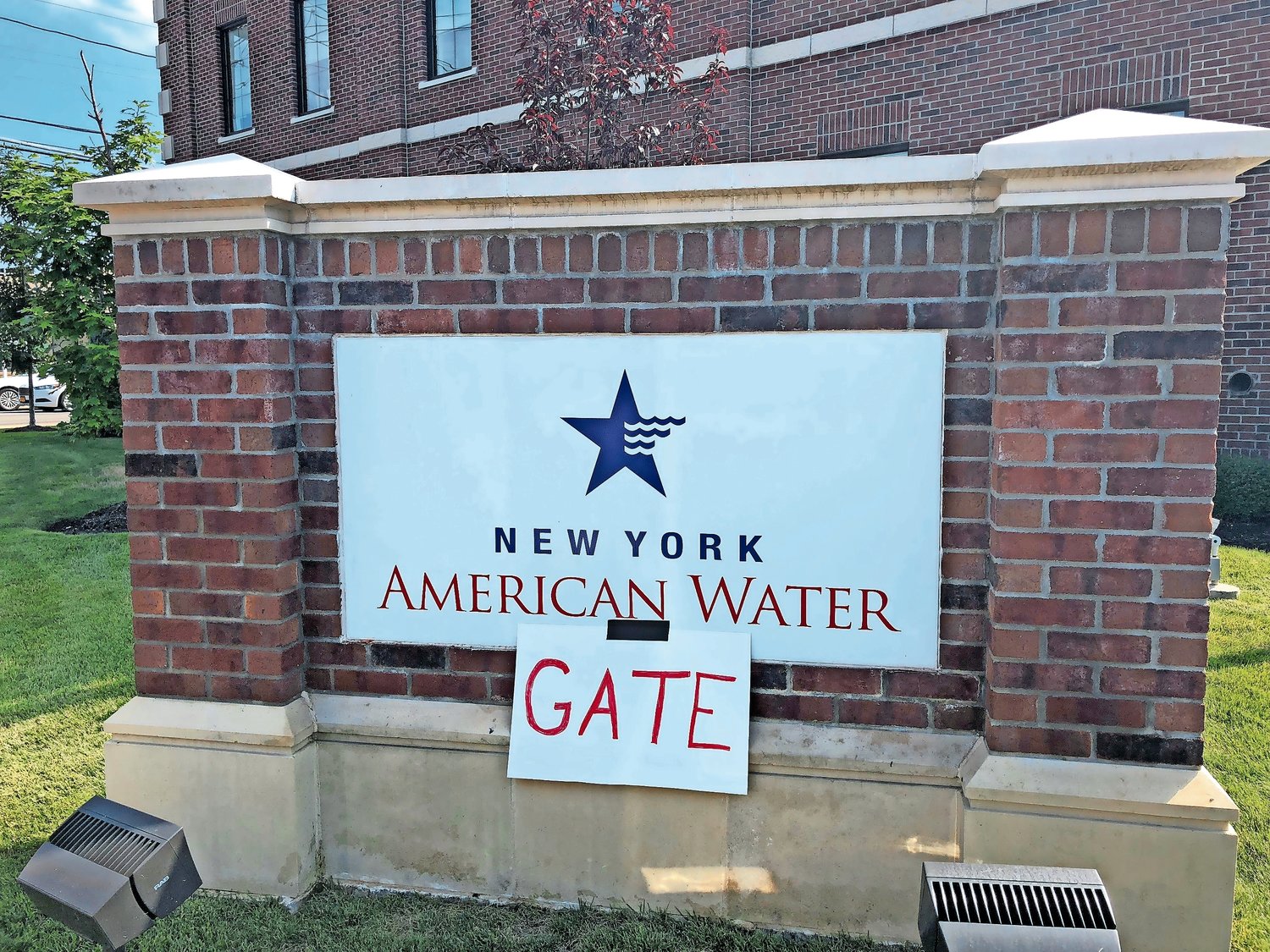New York American Water rate hikes are highest in Lynbrook
Residents in the Lynbrook, Merrick and North Shore water districts found a letter from New York American Water in their mailboxes during the last week of October, and it wasn’t a water bill. It was a rate increase notice, signed off on by the New York Public Service Commission.
NYAW said in the letter that it needed additional revenue to cover its production costs and property taxes. According to the letter, Lynbrook residents will see the biggest increase — 6.47 percent — while rates in the Merrick district will rise by 5.57 percent, and the North Shore district will see a 4.78 percent increase. The new rates took effect on Nov. 1.
“New York American Water is employing every effort to manage the cost of water by reducing expenses, finding efficiencies and working with our customers in finding ways to reduce their bills through water conservation,” Lee Mueller, NYAW’s manager of external affairs, said in a statement. “Water providers throughout the region continue to face increasing costs and regulatory challenges in providing water that meets or surpasses all federal, state and local standards. It is our obligation to meet these challenges head-on and do so effectively, efficiently and responsibly on behalf of the 125,000 households we serve.
“When our customers conserve,” Mueller continued, “not only do they reduce their water bill, but New York American Water is able to defer infrastructure investment projects that are needed to meet peak water demand, which can reach as high as 50 million gallons of water a day in the summer. Conservation is important for helping our customers control their water bill, and it supports the long-term sustainability of Long Island’s sole-source aquifer, which is under significant stress.”
Before the hike was announced, Lynbrook Mayor Alan Beach wrote a letter to Gov. Andrew Cuomo about imposing a cap on the hikes, and in response to the latest increase, he said he stood by his letter. “I implore the governor to impose a 2 percent cap on utility increases, such as the water company,” Beach said, “just like the 2 percent cap he imposes on town and village taxes.”
Deputy Mayor Michael Hawxhurst criticized the utility while urging elected officials to regulate it. “American Water is ... more worried about profits and high pay for executives,” he said. “Our state representatives have failed us in their regulation of such a vital resource.”
State Sen. Todd Kaminsky, a Democrat from Long Beach, also decried the rate hikes. “American Water has been gouging hard-working ratepayers for too long, and this latest increase is another affront to them,” he said. “The Public Service Commission should have never granted these increases in the first place, and Albany clearly needs to find a better way to hold our utilities accountable and ensure they are acting honestly and reasonably with the residents they serve.”
The rate hikes were also a topic at Monday’s village board meeting, with Beach, Hawxhurst and local business owner Jeffrey Greenfield calling on the state to intervene.
In response to a Herald Facebook post, Lynbrook resident Veronica Sympson Krendel said her water bill is now hundreds of dollars per month after NYAW changed her meter. Jonathan Meneses said he had also seen a hike. “We need to get rid of American Water and have it taken over,” he said. “Why is half my bill a delivery fee?”
Many residents also pointed to a study completed by the nonprofit Environmental Working Group, which collaborates with scientists to analyze data from nearly 50,000 local water utilities in all 50 states, and found that there are contaminants in Lynbrook’s drinking water. They included arsenic, chromium and radium, which can cause cancer.
Dr. Olga Naidenko, vice president of science investigations at the Environmental Working Group, explained that even though the water meets water-quality standards, it is still potentially hazardous. “Our broad assessment is that the water quality provided by this particular system complies with regulations,” Naidenko said, “but there are still contaminants in the water at levels, while completely legal, that are still more than scientists would say is good for your health.”
Naidenko said the data was compiled from 2016 and 2017, and was the result of several quality-control tests. She added that the lead levels in the water supply were dangerous, though they also did not violate federal standards.
In response to the studies, NYAW released a statement noting that it takes water quality and safety seriously, and that its treatment processes ensure that the systems meet all the standards of the state, county and the Environmental Protection Agency for safe drinking water. The utility also releases water-quality reports to its customers each year. “The end result of these efforts is that New York American Water treats and delivers high-quality, reliable water,” Mueller said.
Ty Fuller, chairman of the Long Island Water Conference, refuted the Environmental Working Group’s findings, and noted that the county and state departments of health rely on comprehensive science and risk assessments when evaluating water, and that all water contains minerals and other natural substances.
“The EWG’s report focuses solely on the standards set at the federal level, and neglects the several additional layers of oversight and guidelines set at the state and local level,” Fuller said. “Due to this fact, residents should be cautious when drawing conclusions from this report.”
Many residents, however, expressed concerns about the report and the hike. “Public utilities should not be for-profit organizations,” Mike Silverstein said, “and the water shouldn’t have any percentages of cancer-causing anything in [it].”

 54.0°,
Fair
54.0°,
Fair 




